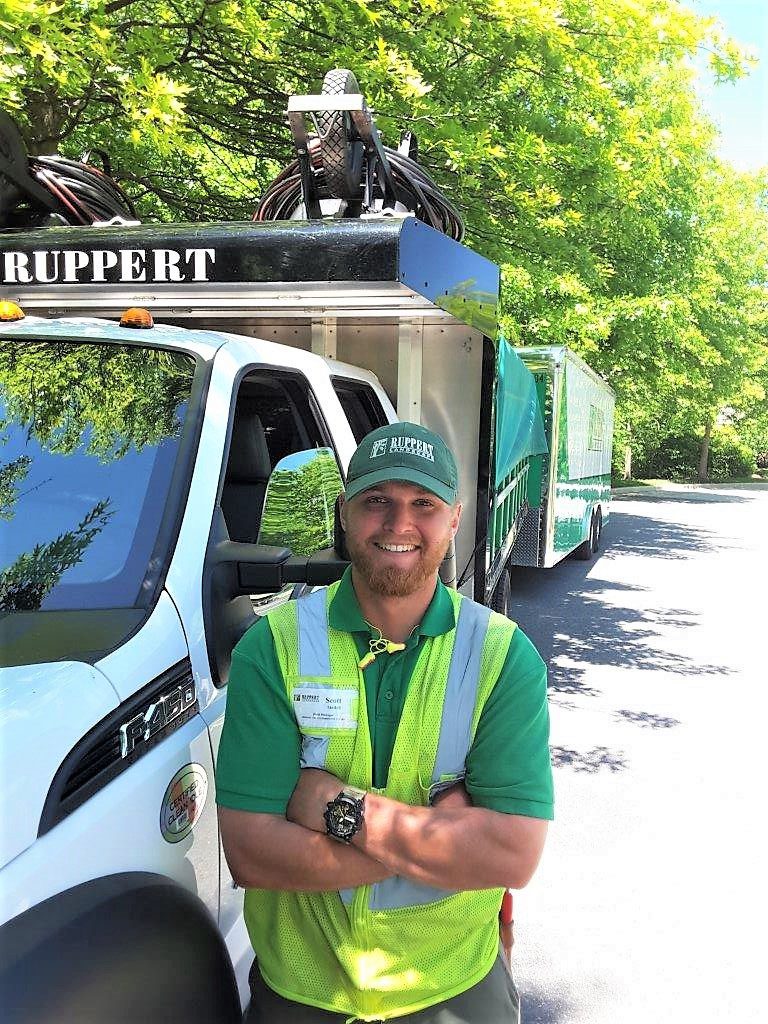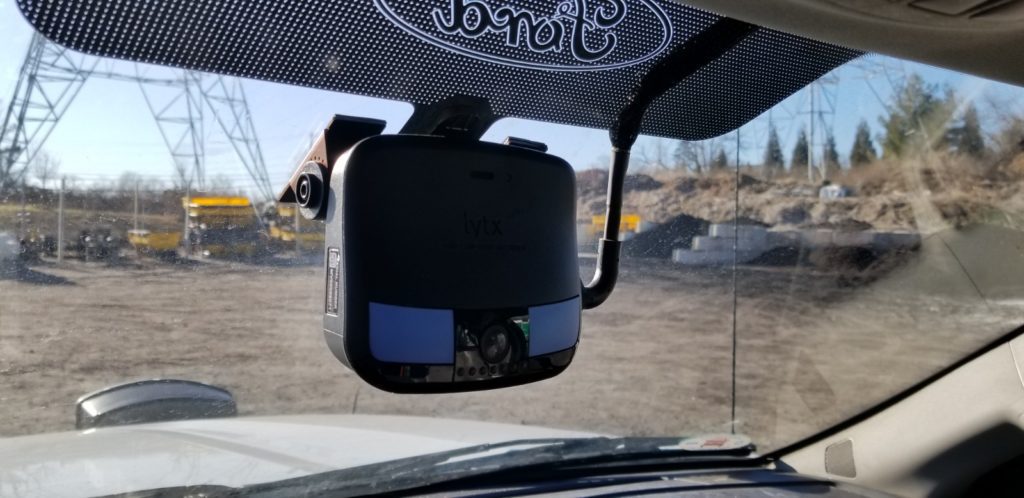By Adrian Karver, Regional Safety Manager
 Driving is not our business, but it is an integral part of getting our work done. Our employees drove over 10 million miles total for work in 2021. That represents countless opportunities for us to be involved in accidents if we do not have conscientious, defensive drivers operating our vehicles. To help keep all our people safe on the road, we follow the DOT required driver approval process in addition to internal company driver approval requirements before we let an employee operate any type of Ruppert vehicle.
Driving is not our business, but it is an integral part of getting our work done. Our employees drove over 10 million miles total for work in 2021. That represents countless opportunities for us to be involved in accidents if we do not have conscientious, defensive drivers operating our vehicles. To help keep all our people safe on the road, we follow the DOT required driver approval process in addition to internal company driver approval requirements before we let an employee operate any type of Ruppert vehicle.
DOT Vehicles
 Before an employee can drive our production vehicles (trucks up to 26,000lbs GVWR with a DOT number posted on the vehicle), they must be approved through the following process.
Before an employee can drive our production vehicles (trucks up to 26,000lbs GVWR with a DOT number posted on the vehicle), they must be approved through the following process.
- Motor Vehicle Record check (MVR): We obtain written consent from the employee to obtain their MVR, to include any violations from the last 10 years, along with a copy of their current driver license for the file. This record check is performed through a third-party vendor that sends us a detailed report including any tickets, suspensions, and severe violations. An individual may be unable to drive for the company if they have one or more of the following on their record:
- Two or more at-fault accidents within the past three years
- One or more major violations within the past three years (e.g. DUI, reckless driving, excessive speeding)
- Any combination of at-fault accidents and other moving violations that totals three or more within the past three years
- Any unsafe act, violation of company policy, or violation of DOT rules
Employees that are stopped at this point in the driver approval process may be able to receive future approval if they keep their license clean and the prior violations age off the report (evaluated on a case-by-case basis by our Safety Director). Employees that receive an approved MVR continue with the following steps.
- DOT Physical & Drug Screen: Employees must pass a DOT physical exam and a drug screen. This is to ensure that the employee is physically able to drive without risk of a medical or chemical impairment.
- Defensive Driver Training: Employees must complete a company administered defensive driving course that reinforces the habits that good drivers use to drive safely.
- Driving History Records Request (prior employers): Driving record requests are sent to all of the employee’s former employers from the past seven years to get feedback on their prior work driving history. If they are determined to have poor driving history with these reference checks that don’t show on their MVR, this may be considered when determining if they are approved to drive for Ruppert.
- Road Test: Employees must do a road test with a qualified manager using a company truck and trailer. The road test consists of doing a pre-trip inspection of the truck and trailer and navigating a set route determined by each branch that exposes the employee to various traffic situations and roadway types. The manager documents their performance in the driving task and either passes or fails them during or following the road test.
- Rules, Regulations and Declarations: The remaining parts of the approval process include the driver reading and agreeing to abide by the Federal Motor Carrier regulations, company Distracted Driving policy, and declaring that they have not previously failed or refused a pre-employment drug screen.
When all these items are approved, signed, and completed, they are combined into an organized file and communicated to our Safety Director Dave Sanders, Claims Manager Lauren Dugan, and our Safety & Fleet Administrative Assistant Alex Marshall. They review the file for accuracy and completeness, and either approve it or request additional information. Once approved, the employee is cleared to drive for Ruppert.
Non-DOT Vehicles
We have a second group of managers, business developers, and administrative employees driving non-DOT company vehicles. These are sedans and compact pickup trucks that are not used for production, which fall into a lower weight category that does not require them to display DOT numbers and are generally assigned as daily take-home vehicles. All the same, we have a driver approval process for the employees assigned to these vehicles that includes a Motor Vehicle Record (MVR) check; defensive driver training; signed agreement to the rules, regulations and declarations; and reading and signing our driver policy for managers vehicles.
NOTE: In general, we only approve drivers that are over the age of 21. In certain circumstances, employees who are under 21 can be approved as drivers, provided they can meet all the requirements noted above in addition to having a special exception approved by the Branch Manager, Region Manager, Division Manager, and Safety Director.
 In addition to the driver approval process, we have systems in place to help monitor if our approved drivers are being safe on the road and provide opportunity to coach them on better driving practices as needed. The primary example of this is the DriveCam (Lytx) dash cam systems installed in each production vehicle. This device collects and processes data and video using two wide-angle lenses to capture events in front of and behind a vehicle, covering a 360-degree view. The dash cam captures events generated by the recorder’s g-force sensors. This system allows us to identify potential distractions and risk factors such as cell phone use, seatbelt use, weaving between lanes, and failure to stop at intersections. We receive alerts daily for clips that have been identified as showing unsafe driving behaviors. The Branch Safety Reps review the video footage and information weekly with the drivers and provide coaching and training to change poor driving behaviors that could lead to accidents and injuries.
In addition to the driver approval process, we have systems in place to help monitor if our approved drivers are being safe on the road and provide opportunity to coach them on better driving practices as needed. The primary example of this is the DriveCam (Lytx) dash cam systems installed in each production vehicle. This device collects and processes data and video using two wide-angle lenses to capture events in front of and behind a vehicle, covering a 360-degree view. The dash cam captures events generated by the recorder’s g-force sensors. This system allows us to identify potential distractions and risk factors such as cell phone use, seatbelt use, weaving between lanes, and failure to stop at intersections. We receive alerts daily for clips that have been identified as showing unsafe driving behaviors. The Branch Safety Reps review the video footage and information weekly with the drivers and provide coaching and training to change poor driving behaviors that could lead to accidents and injuries.
Statistically, driving is one of the most dangerous things that we do each and every day. By following the DOT guidelines and our own internal safety training and procedures, we strive to limit our risk on the roadways as much as possible so each of our employees goes home to their families each day in the same condition in which they came to work.
Stay safe out there!